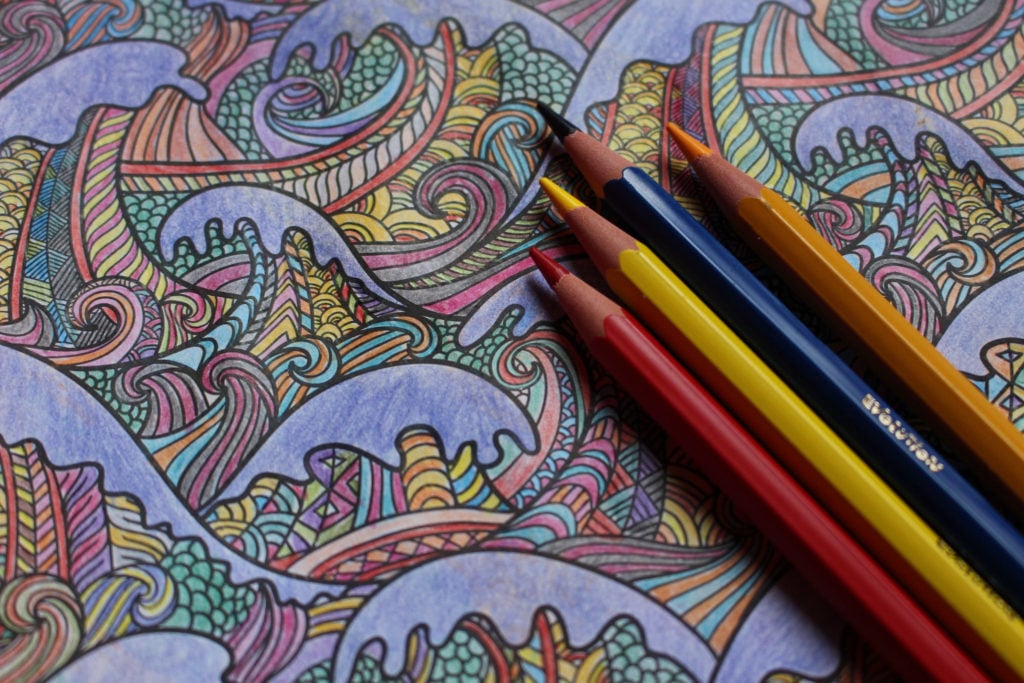Art World
Good News, Doodlers! Psychologists Say Adult Coloring Books Actually Do Lower Stress
Coloring tends to reduce bad moods—but it's still no substitute for legitimate art therapy.

Coloring tends to reduce bad moods—but it's still no substitute for legitimate art therapy.

Adult coloring books have, over the past two years, become one of the biggest sales phenomena to hit the modern publishing industry. Approximately 12 million adult coloring books sold in the US in 2015, boosting the sale of adult nonfiction by 6.6 percent and causing a global colored-pencil shortage.
Many attribute the trend to the purported therapeutic benefits of coloring—which, it turns out, are not just for children. The promotional copy on many of the books claims that the activity can reduce stress and promote mindfulness.
One of the most popular coloring books this year, Calm the F*ck Down—currently ranked among the top 100 best-selling books on Amazon—is filled with trippy patterns and sassy self-help sayings like, “Something to do until the Valium kicks in.”
But do the books really provide these far-reaching benefits? To find out, researchers at New Zealand’s University of Otago put the claims to the test.
For a recent study published in the Creativity Research Journal, psychologists gave 115 young women either a coloring book or a book of puzzles. Each day for seven days, the participants colored in pictures of animals, mandalas, and nature scenes, or completed non-artistic puzzles, like Sudoku and word searches. They also rated their stress, depression, and anxiety levels before and after completing the activities. (None of the participants reported severe symptoms.)
The study ultimately confirms what some others have found in the past: that the coloring exercises did—to a small, short-term degree—reduce symptoms of depression and anxiety. The puzzle exercises, on the other hand, didn’t have the same effect. Both categories, however, seemed to improve participants’ “mindfulness” by small margins.
“Coloring could be considered an act of everyday, of little c creativity in much the same way as gardening or gourmet cooking,” the paper says.
Other researchers, however, caution against the use of coloring books as a substitute for more traditional art therapy. “What many of these studies are lacking is the presence of a trained art therapist during the art-making portions of the experiments and the verbal processing of the art product created—both are crucial components of art therapy practice,” write the authors of a recent study in the Canadian Art Therapy Association Journal.
The researchers compared the after-effects experienced by adults who used coloring books with those who worked in a studio with art supplies and a trained art therapist who provided discussion and guidance, but no explicit direction. The results showed that both activities reduced negative feelings of stress and anxiety, but only the studio practice improved subjects’ already positive moods, offering heightened feelings of self-efficacy and creative agency.
“For many adults, entering an art studio, having a blank page in front of them, and being asked to create art can be quite an anxiety-provoking experience, so much so that most of them avoid this experience altogether,” the researchers say. “Yet it is precisely through having this initial discomfort and leaning into it, rather than stepping away from it, that leads to a change in one’s view of self.”